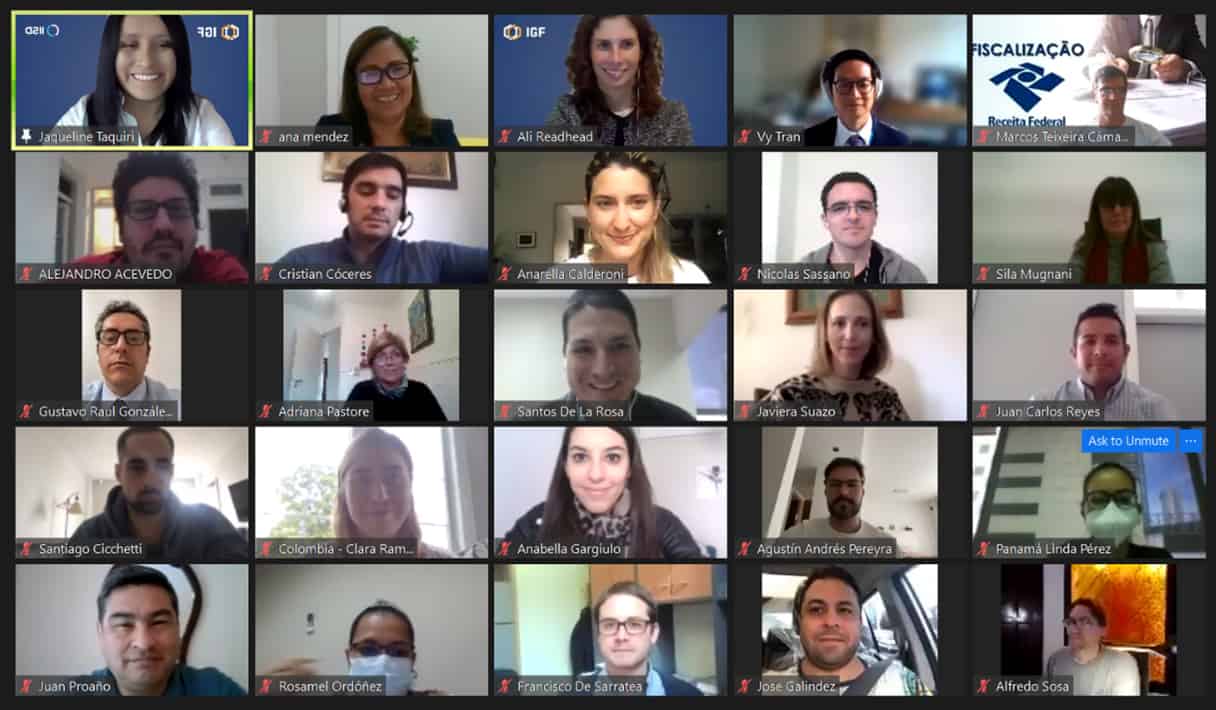Mining is an important economic sector for many countries in Latin America. Sharing the industry’s benefits fairly is crucial to supporting workers, local communities, governments, and building confidence in the industry as well as reducing any negative effects on the environment.
However, from a fiscal perspective, tax base erosion and profit shifting (BEPS) can hinder government revenue collection and reduce the financial benefits flowing from mining, leading to mistrust alongside economic, social, and legal consequences.
Minimizing BEPS risks to revenue and optimizing fiscal benefits are key concerns for mining member countries of the Inter-American Center of Tax Administrations (CIAT), the Intergovernmental Forum on Mining, Minerals, Metals and Sustainable Development (IGF), and the Organisation for Economic Co-operation and Development’s (OECD’s) Inclusive Framework.
I learned a lot about the advantages and disadvantages of various tax measures for mining.
– María Mercedes Suárez Venegas, Ministry of Economy and Finance, Peru
In 2021, these three organizations collaborated to facilitate a regional training program for more than 236 government officials from 18 countries in Latin America, the Caribbean, as well as Lusophone Africa. The eight-module course covered a wide range of issues and provided space for peers to share their experiences and ideas.
Participants attested the usefulness of the initiative, and their feedback helped the partner organizations understand where more government capacity-building support is needed.
“I learned a lot about the advantages and disadvantages of various tax measures for mining. This will be helpful when evaluating proposed domestic tax reforms,” said María Mercedes Suárez Venegas, a tax lawyer at the Ministry of Economy and Finance of Peru.
Over the course of the training, knowledge gaps around mineral pricing and metals streaming contracts stood out as particular areas of concern for participants.
Participant Testimonials
Mineral Pricing
Mining royalties and taxes are usually levied on the value of the mineral produced. It follows that correct pricing is essential for proper revenue collection. However, as participants highlighted, mineral pricing is not always straightforward.
Minerals are sold at various stages of beneficiation, which makes it difficult to determine a market price. And when sales occur between related parties, there is an increased risk of underpricing.
Many minerals hosted by Latin American countries are considered critical for the low-carbon energy transition and as inputs for new technological products. Some, such as lithium, do not have transparent publicly quoted prices for tax administrators to reference. In addition, where there are transparent market prices, such as for copper and bauxite, comparability adjustments are required to reflect mineral grade, quality, and transport costs, which can further complicate matters.
This program allows us to improve our capacity to review mining companies.
– Oscar Fernando Trujano Sandoval Tax Administration Service, Mexico
Specialized expertise and awareness are critical for tax officials working on mineral pricing, and knowledge gaps can be costly for governments.
In our regional training, we discussed case studies, including a recent example involving copper concentrate exports from Peru that cost the government an estimated USD 180 million, to show participants how risks can be avoided and facilitate better practices, even in tax administrations that may be under resourced.
“The transfer pricing audit team covers many sectors, so this program allows us to improve our capacity to review mining companies,” said Oscar Fernando Trujano Sandoval, a transfer pricing audit administrator with the Tax Administration Service of Mexico.
Metals Streaming
Metals streaming is a relatively new practice whereby a developer agrees to sell future mineral products at a discounted price in exchange for an upfront payment.
It is increasingly popular as an alternative to more traditional financing methods, particularly for smaller operators unable to attract funding through equity and debt markets. An estimated half of all streaming deals are linked to mining projects in the Americas, so it was top-of-mind for many training participants.
Officials pointed to a lack of knowledge and available resources on taxing metals streaming transactions, despite their growing prevalence in the region. Many administrations struggle with characterizing the various payments related to streaming: Are they financing agreements or mineral sales? What is the tax treatment of the upfront payment? And how should the government calculate revenue from the sale of discounted minerals to a financier?
The mineral streaming module helped me to delve into relevant aspects of a challenging subject for us as auditors.
– Patricia Sepúlveda Garcés, Internal Revenue Service, Chile
Participants studied the case of the San Dimas mine in Mexico, where the owner sold future silver production to a financier at the discounted rate of USD 4.00 per ounce. In this case, an advance pricing agreement between the mining company and government ensured taxes payable would not be calculated based on market price but on the company’s realized revenue from mineral sales, including the silver stream sold at a discount. This led to an ongoing tax dispute between the company and government and illustrates the complexity of taxing revenues under metals streaming contracts.
While metals streaming contracts are typically between independent parties, government officials indicated that they are increasingly seeing related-party streaming arrangements. This raises the potential for transfer pricing risks as well as the need for more specialized capacity in tax administrations.
“The mineral streaming module helped me to delve into relevant aspects of a challenging subject for us as auditors due to the complexity of this type of contract,” said Patricia Sepúlveda Garcés, a mining sector tax auditor with the Internal Revenue Service of Chile. “We will bring this knowledge to our audit team.”
By the Numbers
- 236 government officials
- 18 countries represented
- 50% women participants
- 82% reported increased knowledge
- 90% reported increased capacity
- 93% average participant retention between modules
Participant opinions quoted in this blog do not represent the official position of their affiliated agencies. For more information, contact us at garias@ciat.org, secretariat@igfmining.org, or ctp.communications@oecd.org.

